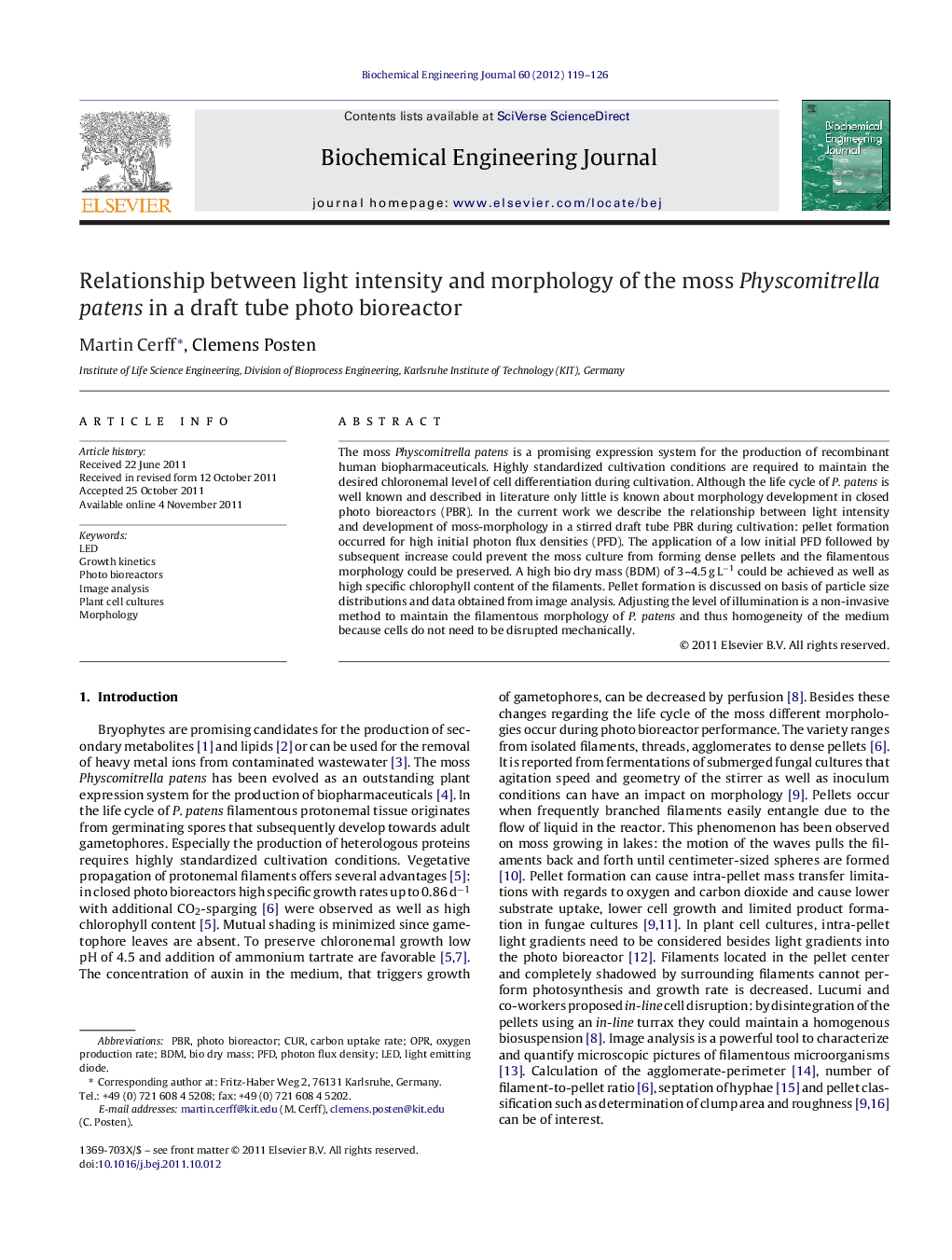| Article ID | Journal | Published Year | Pages | File Type |
|---|---|---|---|---|
| 3671 | Biochemical Engineering Journal | 2012 | 8 Pages |
The moss Physcomitrella patens is a promising expression system for the production of recombinant human biopharmaceuticals. Highly standardized cultivation conditions are required to maintain the desired chloronemal level of cell differentiation during cultivation. Although the life cycle of P. patens is well known and described in literature only little is known about morphology development in closed photo bioreactors (PBR). In the current work we describe the relationship between light intensity and development of moss-morphology in a stirred draft tube PBR during cultivation: pellet formation occurred for high initial photon flux densities (PFD). The application of a low initial PFD followed by subsequent increase could prevent the moss culture from forming dense pellets and the filamentous morphology could be preserved. A high bio dry mass (BDM) of 3–4.5 g L−1 could be achieved as well as high specific chlorophyll content of the filaments. Pellet formation is discussed on basis of particle size distributions and data obtained from image analysis. Adjusting the level of illumination is a non-invasive method to maintain the filamentous morphology of P. patens and thus homogeneity of the medium because cells do not need to be disrupted mechanically.
Graphical abstractFigure optionsDownload full-size imageDownload as PowerPoint slideHighlights► Choice of light intensity affects morphology of the moss Physcomitrella patens. ► Pellet formation in a draft tube photo bioreactor at high light intensities. ► Characterization of pellet formation by image- and particle size analysis. ► Low initial light intensity and stepwise increase enables high bio dry mass concentrations (>4 g L−1) and maintains isolated filaments. ► Adjustment of illumination conditions as non-invasive process strategy.
